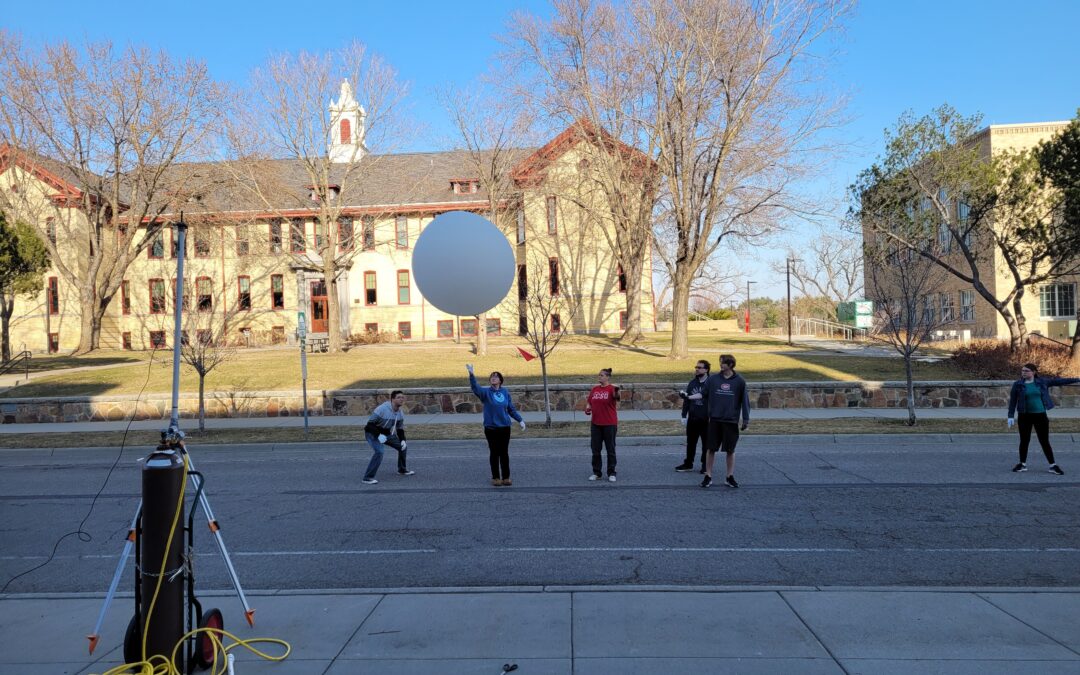Article by Sage Russ. Photo by Sage Russ.
Severe weather season is underway and meteorology students are bushing up on their severe weather preparation.
The St. Cloud State American Metrological Society held a Skywarn Spotter training last night, which helps students learn the process of spotting, reporting, and acting on severe weather. This event was held with approval from the National Weather Service as an official training session and was open to the public.
This Training session is part of the National Weather Service’s severe weather awareness week, where they teach the public what to do in warm season severe weather situations.
It wasn’t just the Skywarn training session that brought people in, as St. Cloud State metrology students also launched a weather balloon. This was the fourteenth weather balloon they launched this semester.
This weather balloon measures temperature, dew point, wind speed, and direction. This data gets sent to the National Weather Service to help fill in the gaps as the nearest launch site to St. Cloud in Minneapolis.
After the weather balloon was launched into the air the Skywarn Spotter training began.
The Training was taught by Assistant Professor of meteorology at St Cloud State Dr. Rachel Humphery. This was Humpherys ninth year teaching this course.
People who attended this training were given the option to get a spotter number to make storm reports. This number also allows the Weather Service to contact the spotter and ask them to be in a position under storms that may form.
The Meteorology Department says the goal of this class is to get more spotters in the system, as radar can only see so much. Spotters can report information on the ground in real-time to help the weather service save lives.
The department stressed safety throughout the class, saying It was an important goal to make sure that safetey was the number one priority, not sending reports.
It wasn’t just students who were able to attend this event, as all members of the community were invited to learn about the weather. This class was designed to be understandable even if you didn’t have a meteorology background.
Questions were encouraged throughout the class to encourage people who might not have the greatest understanding to clear any confusion they had over severe weather.
When asked about if people should take these classes Humphery said, “The more people who can learn the better.”
When asked about the benefits of this program Humphery said people would, “Learn how to send in valuable reports and communicate with the Weather Service.”
To find out more about the training, visit the National Weather Services Website.






Recent Comments